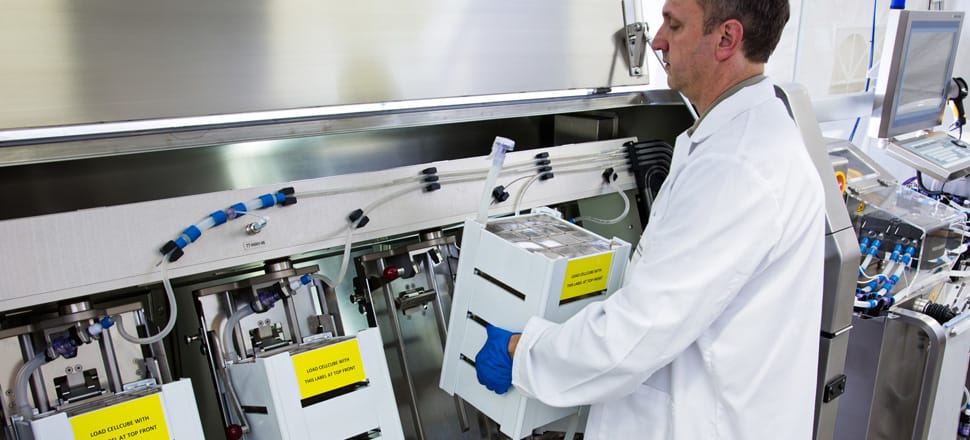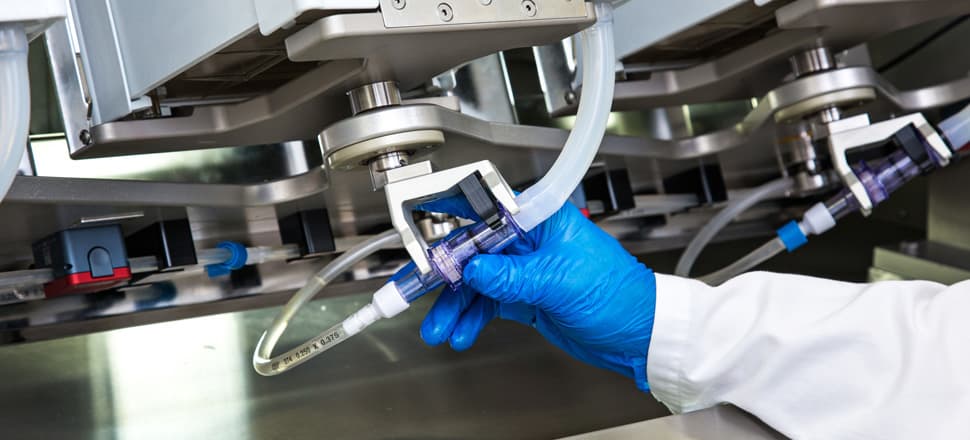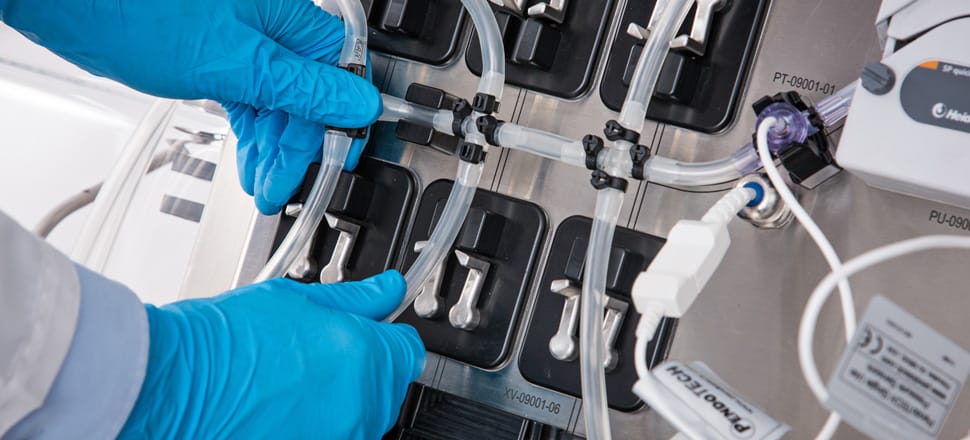One of our clients worked on the development of an allogeneic cell therapy to treat a disease that is increasing in prevalence in both emerging and mature economies alike. The therapy is derived from human umbilical tissue-derived cells (hUTCs) which are harvested then expanded to form a Master Cell Bank of cells. It is these cells that are processed to form the final drug product.
Our role in this ground-breaking development has been to design and supply the automation equipment that produces the cellular drug product for the Phase II and Phase IIb trials. Three equipment platforms have been developed for our client to enable ongoing development for Phase III trials, and ultimately cGMP manufacture commercial product.
System components included:
- A cell expansion platform for handling expansion containers and medium fluidics
- A formulation platform for automated, closed, accurate and rapid formulation of concentrated cell suspension with cryo-preservative
- A working cell bank dispensing platform, enabling automated, closed, cryo-bag filling for up to 100 bags




